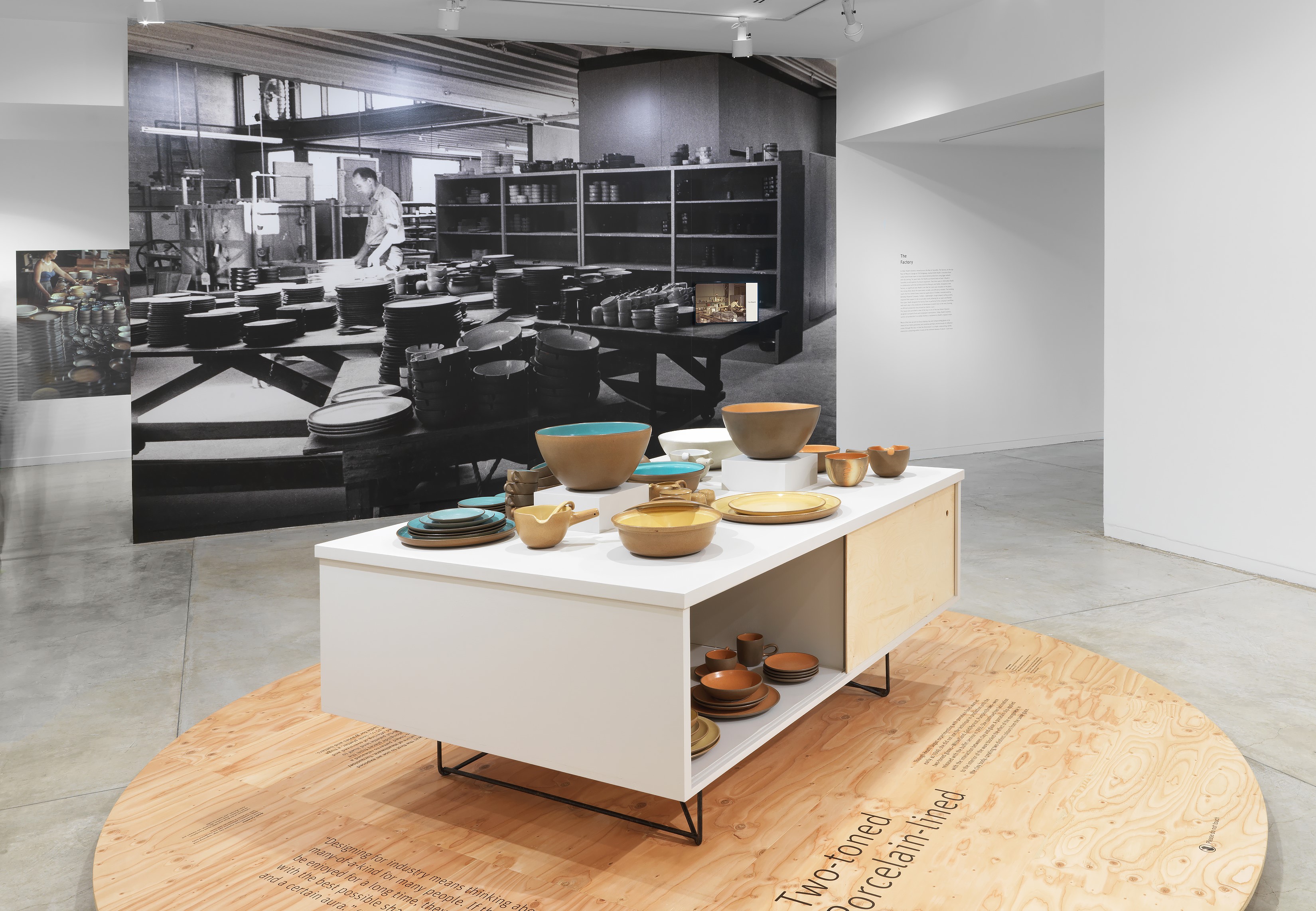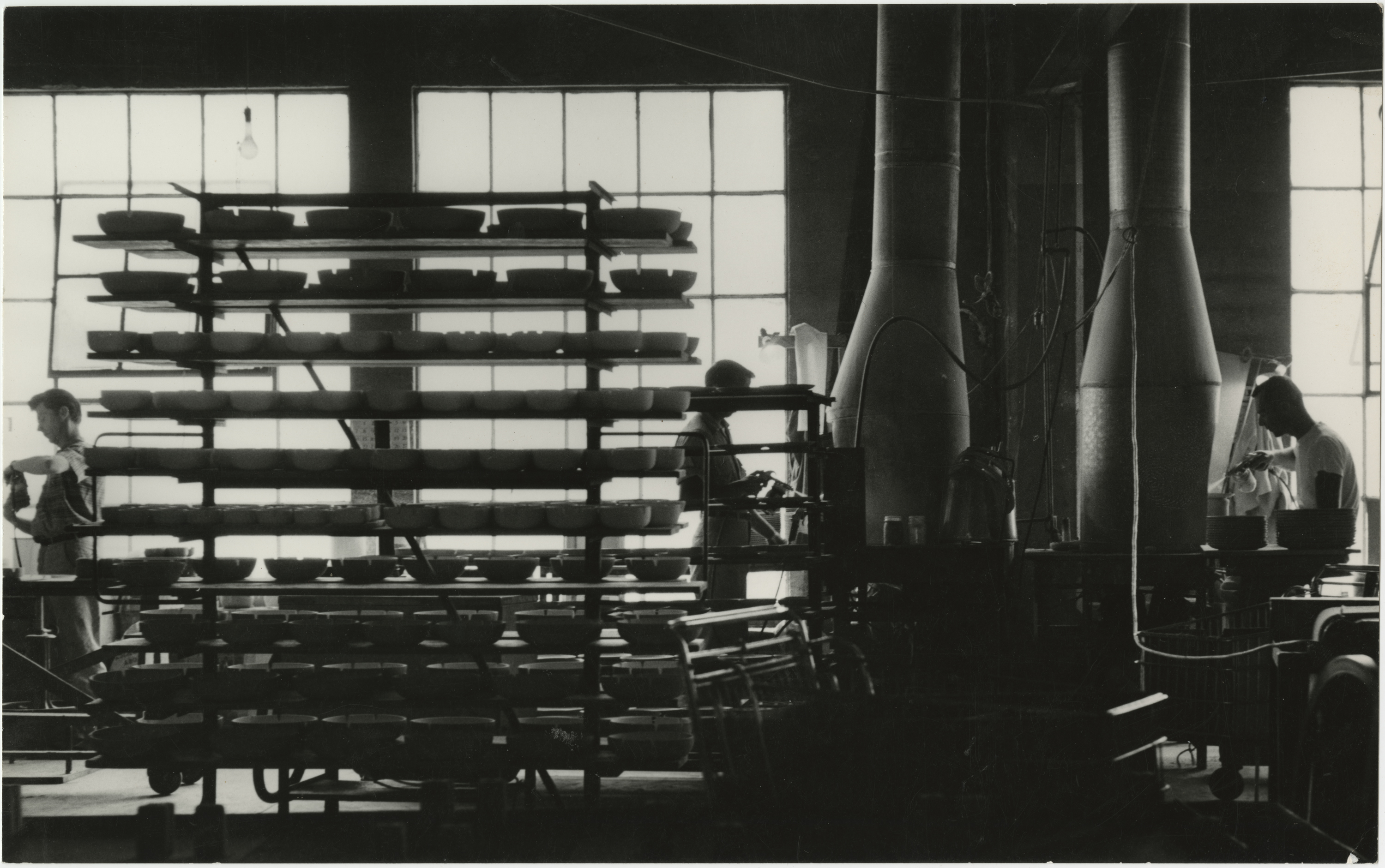In 1947, Heath Ceramics moved across the Bay to Sausalito. The factory, on the top floor of Mason’s Garage at 791 Bridgeway, marked Edith Heath’s transition from solely hand-thrown ware to more industrialized production using jigger wheels and slip casting. Six years later, the Heaths purchased land on Gate 5 Road in Sausalito in anticipation of a future expansion. That time came in 1959 when Heath, in collaboration with the architectural firm Marquis and Stoller, designed a new factory; so significant was Heath’s role that her name was included on the plans. Her strong ideas about the space were socially- and efficiency-minded. The building featured the first United States industrial application of Trofdek, manufactured by Berkeley Plywood Company. Trofdek, a lightweight, trough-shaped roofing system, required little support to be structurally sound, allowing for an open and flexible floor plan. Heath designed the factory floor to perfectly fit the company’s workflow, with each step in the production of dinnerware located close to the next, forming an efficient production loop around an interior court. This layout also provided a view of the bay or one of the two Robert Royston-designed courtyards from each employee’s workstation. Today, Heath Ceramics carries out production in a similar fashion, a testament to Heath’s original vision.
Most of the time we are too busy shaping clay and compounding glazes to be aware of our idyllic panorama, but somehow perhaps unconsciously its influence comes through the clay—in that the dinnerware is a simple, unassuming, earthy expression containing within it some of the inherent beauty of nature. (Edith Heath, correspondence to Sheila Hibben of The New Yorker, 1949)


